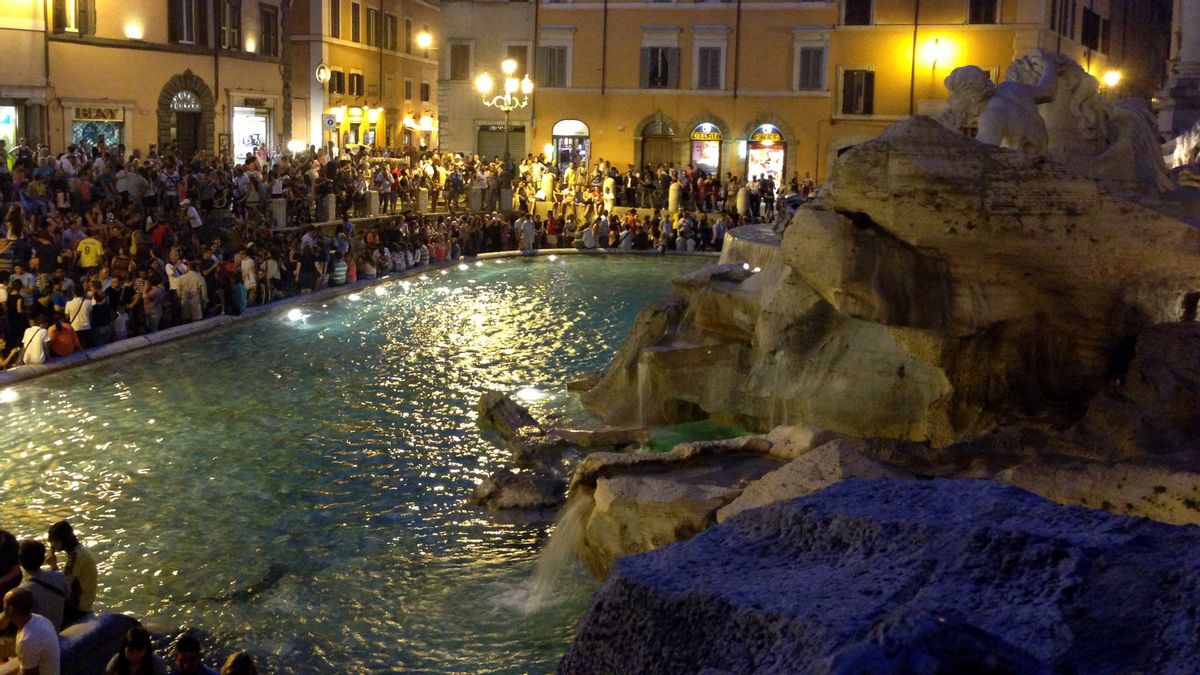JAKARTA - The Italian capital authorities said they would launch a regulatory scheme at the Trevi Fountain (Trevi Fountain) as part of a plan to reduce crowds and promote "continuous tourism".
This 18th-century fountain has long been a'mandatory' destination for tourists who come to Rome, but is often crowded with pickpockets and many pickpockets.
"Personally, I support seeing the form of new, limited and time-long access to Trevi Fountain," said Alessandro Onorato, a member of the Rome City Council in charge of tourism to the Italian newspaper Corriere della Sera, cited from Euro News, October 10.
If enforced, it will act as a "free reservation system for Roma citizens and subject to a symbolic cost of 1 euro for tourists", Onorato added.
Despite the high cost, the city government said the purpose of the levy was not to raise money, but to reduce and control crowds, while at the same time stopping them from "eating ice cream or pizza at a monument worthy of proper respect."
This fountain is one of the most visited tourist attractions in Italy and around the world. That means this place is often filled with people who have difficulty getting a glimpse of the icon, designed by Italian architect Nicola Salvi.
It is known that Roma receives an average of 35 million visitors every year and that number is expected to be even higher by 2025.
Citing CNN, Roma is preparing to host Jubileum 2025, the Roman Catholic event is expected to attract around 32 million tourists and pilgrims.
Access to the Barok fountain will be limited next month as long as it is cleaned. A number of tourists will still be given access during the maintenance project, with a glass footpath built on Trevi Fountain to offer a unique view of these works.
SEE ALSO:
The city government said it would be used to better understand the flow of tourists to the monument, and would likely be a precursor to access restrictions and entry costs that will take effect by 2025.
Trevi's Fountain is famous for its tradition of visitors throwing coins to ensure they return to Rome and fulfill their wishes. After being built in 1762, it is the final barok masterpiece, with Triton statues guiding Oceanus' shell train, illustrating the theme of draining water.
The English, Chinese, Japanese, Arabic, and French versions are automatically generated by the AI. So there may still be inaccuracies in translating, please always see Indonesian as our main language. (system supported by DigitalSiber.id)


















